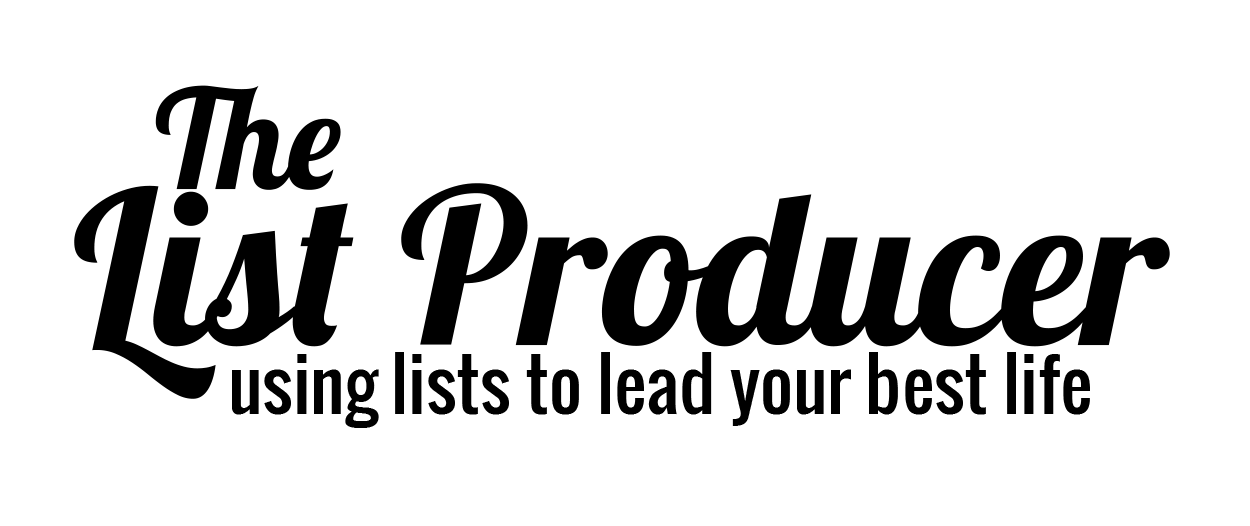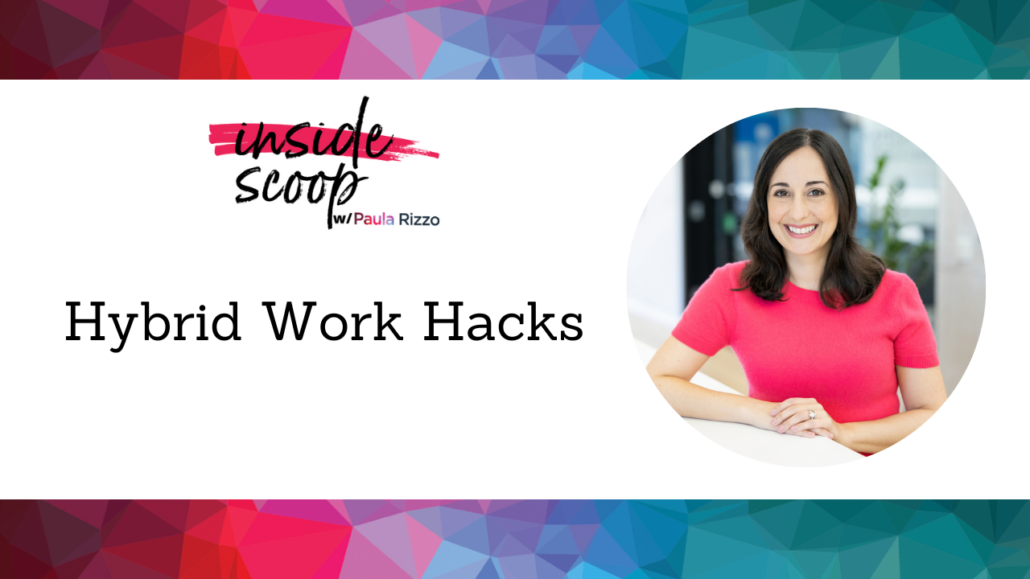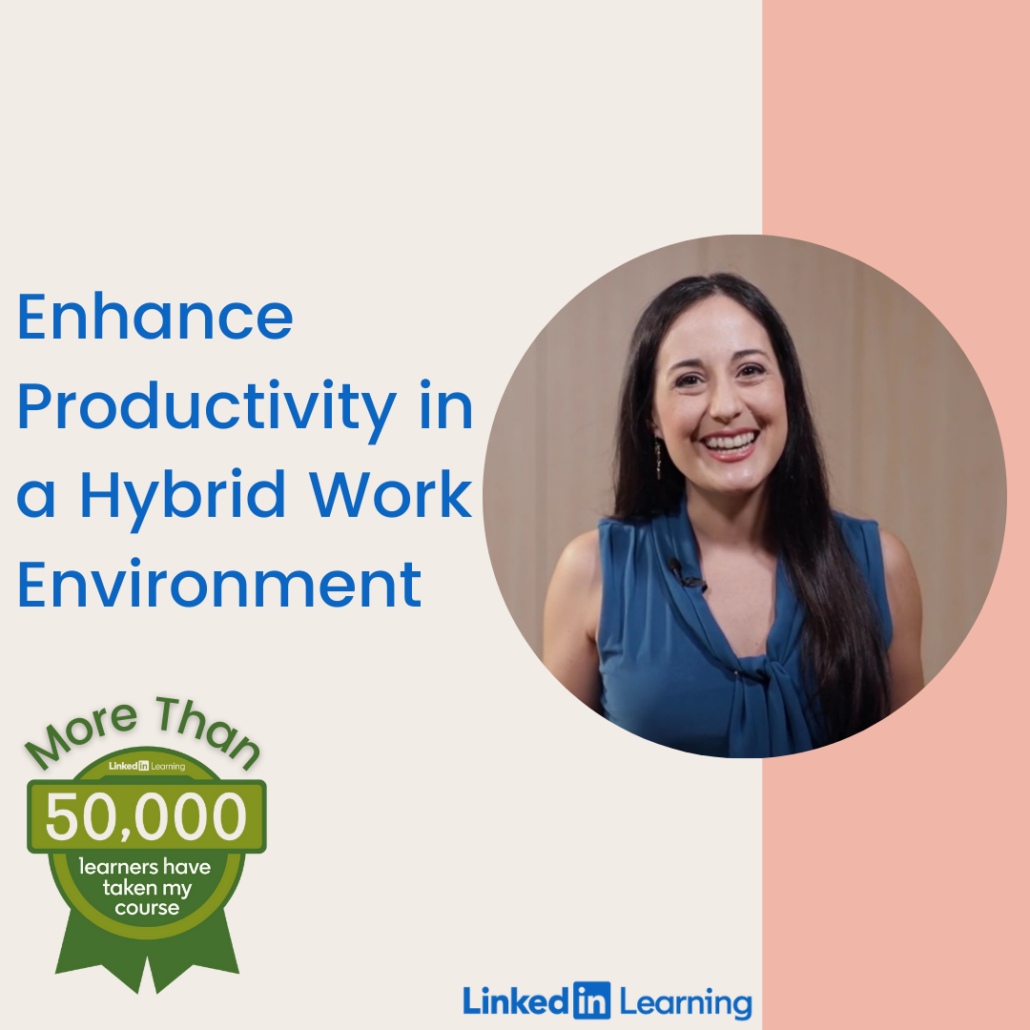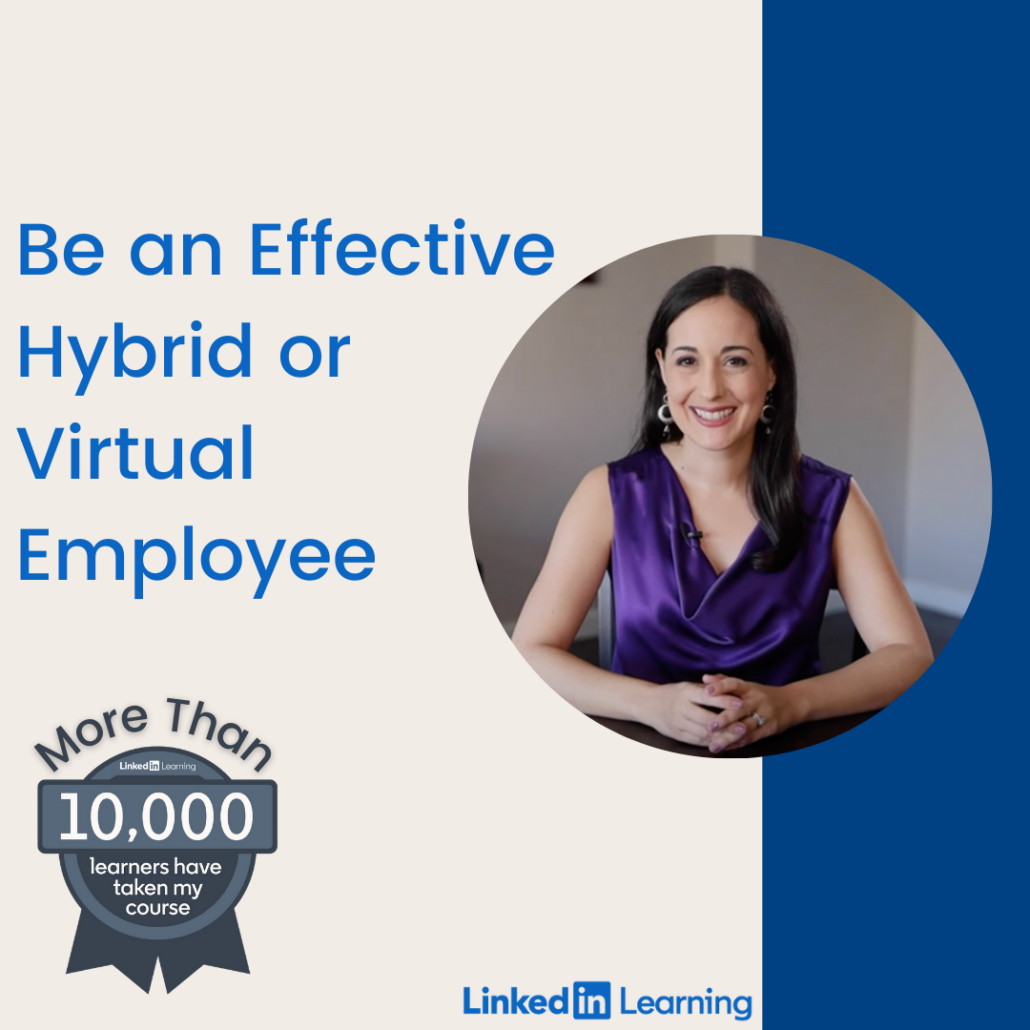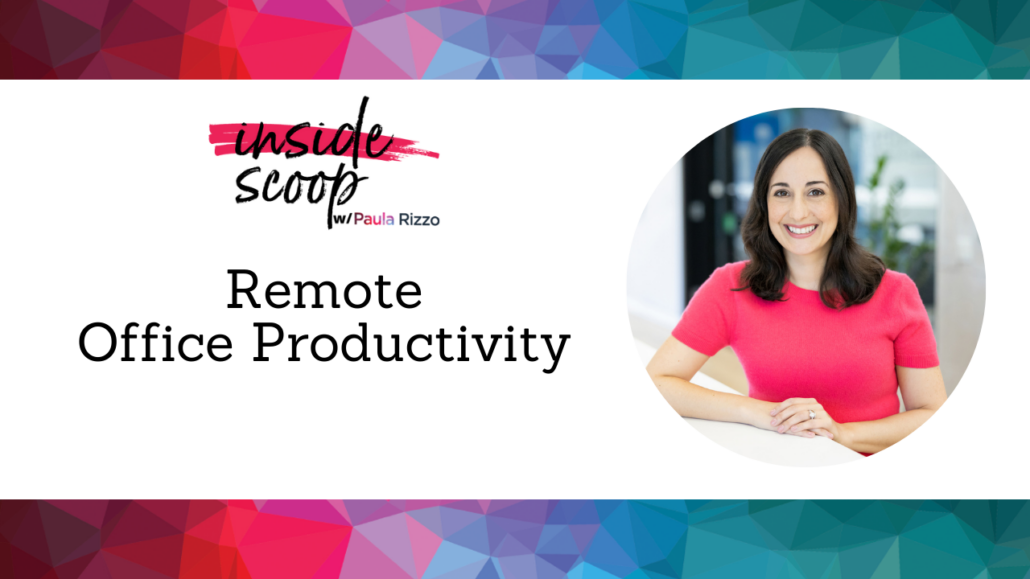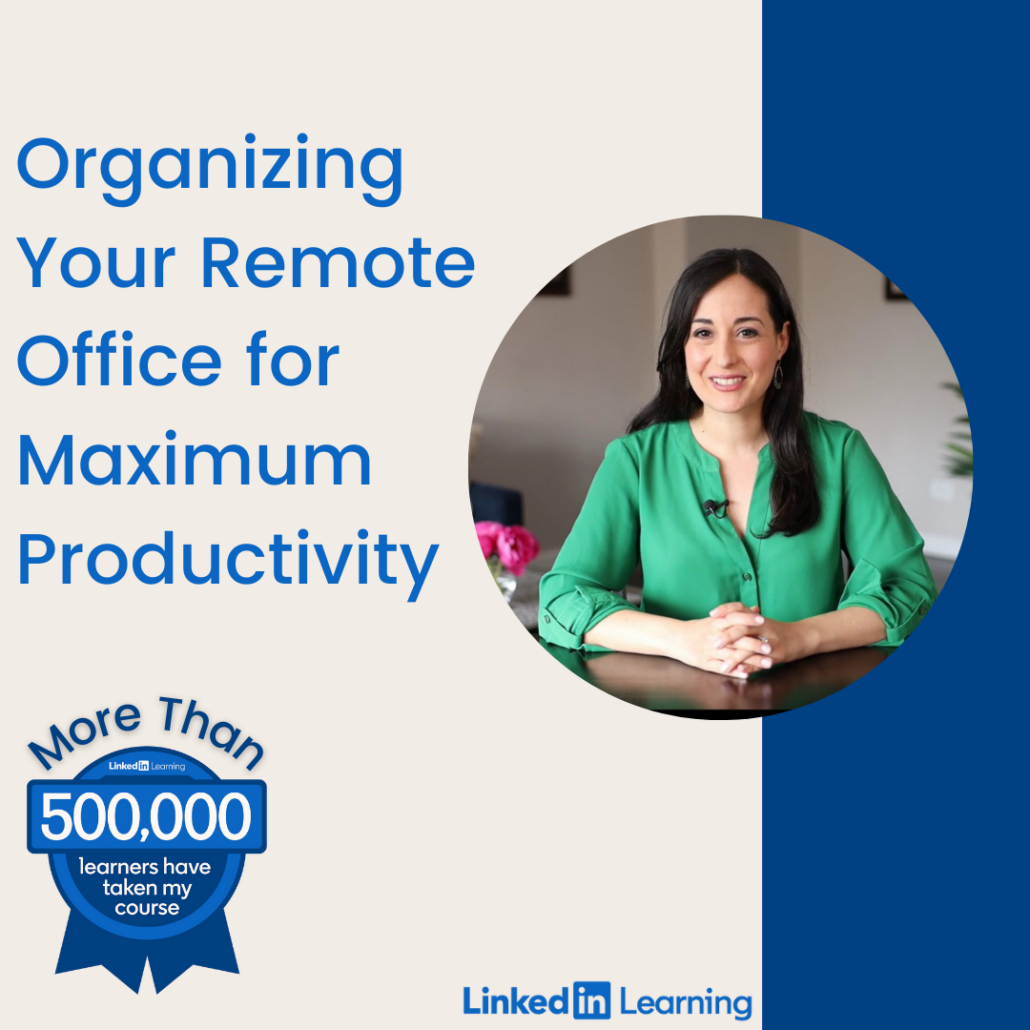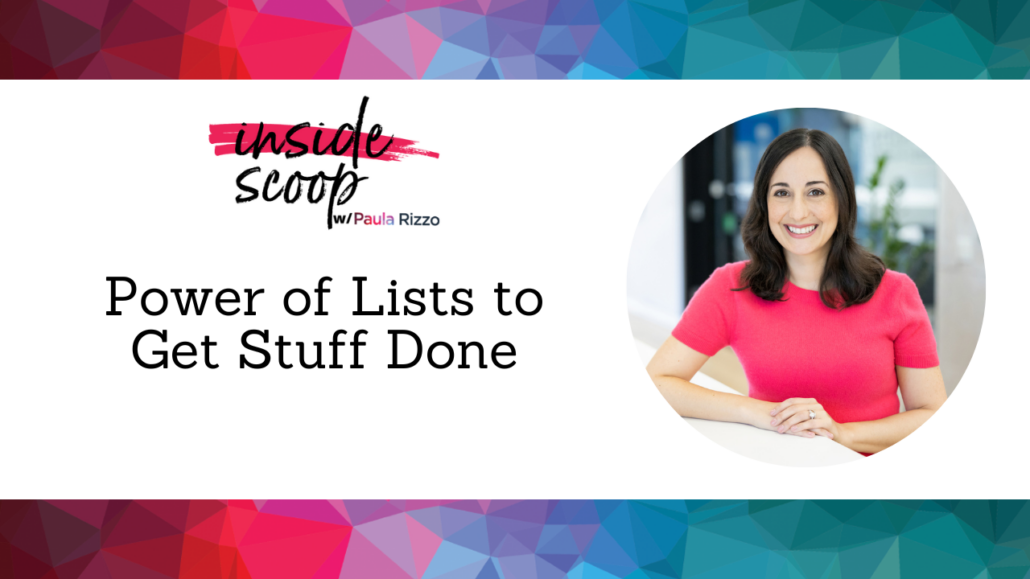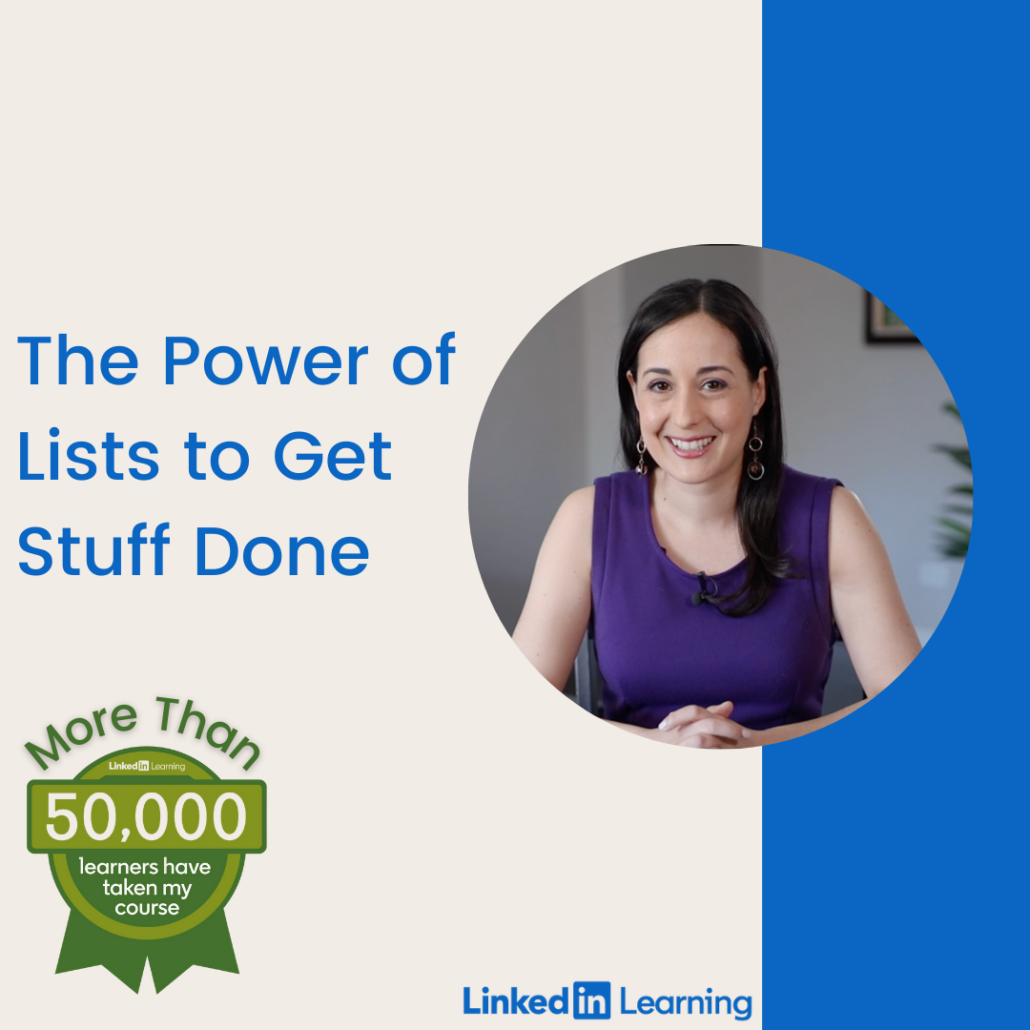Five Hacks for Enhanced Hybrid Productivity
___
BONUS FREEBIE: Want even more ways to stay organized, productive and less stressed? Click here to get access to my List-Making Starter Kit. It will boost your efficiency and get you back to doing more of the things you love.
___
Hybrid work is here to stay — like it or not! If you’re in a hybrid role, it’s important to know exactly how to set yourself up for success.
Hybrid work is unique because it’s not working in the office or working fully from home — it’s both, so it requires you to build your skills with in-person and remote productivity.
I created two LinkedIn Learning courses all about how to be strategic when planning for hybrid productivity (and fully remote work!).
I also gave a little preview of these courses in my live-stream show Inside Scoop.
The first course, Enhanced Productivity in a Hybrid Work Environment, is all about defining your productivity style and getting to know yourself, and the second, Be an Effective Hybrid or Virtual Employee, is about creating day-to-day plans that help you improve your effectiveness in these roles. They really work together!
Here are some of the tips I shared — a little taste of what you’ll learn in my new courses, Enhanced Productivity in a Hybrid Work Environment and Be an Effective Hybrid or Virtual Employee.
1.) Know yourself.
How do you work best? Get to know your productivity style. This is something I wrote all about in my book Listful Living. Here are some questions to get you started:
- Is morning when you do your best work? Or late at night?
- Does natural light help you feel ready to tackle your tasks? Or do you like having a cozy lamp on?
- What types of distractions cause the most disruption in your flow? How can you minimize these at home and in the office?
2.) Be flexible.
Being a hybrid employee means being flexible. Expecting to be in flux mode means you can build a toolbox to make your work happen wherever it needs to happen — and planning ahead so your space matches your task!
3.) Split your work intentionally.
Say you go into the office Mondays, Wednesdays, and Fridays, and you are work from home (WFH) on Tuesdays and Thursdays. That means you need to split up your tasks for the week in a way that matches the spaces you’re working each day.
Maybe you have a quiet space in the office but not at home, so you would save a task like writing for when the environment is suited to that work. Collaborative meetings via Zoom with people located around the country might be a better use of time for your WFH days. This is just an example! It might look different for you.
Think about the qualities of your home and in-office work spaces and then divide up your tasks according to what you need. Of course, this isn’t always completely possible, and that’s okay. Back to #2 — be flexible!
4.) Check in on your goals.
Making the big shift to hybrid work can be an opportunity to come back to basics and think about what your goals are. How can hybrid work give you an opportunity to get there? What do you need to give attention to in this new set-up? Again, being intentional will help you use hybrid work effectively in reaching your short- and long-term professional goals. For instance, do you want to make your voice heard in meetings? Well, you’ll need to adjust your strategies if your meetings are in person versus on Zoom. This is something I go into in depth in my course.
5.) Give yourself grace.
Transitioning to hybrid work can feel like you’re starting a new job, even if you’re not. It’s okay to feel the newness of this set-up. Give yourself grace and remind yourself of why you entered this field when you were just starting out. That mindset can get you far and really support your skill-building process.
If you’re a hybrid employee or employer, my two courses have a lot more actionable tips. You can access them — and my other LinkedIn courses — on my LinkedIn instructor page.
___
BONUS FREEBIE: Want even more ways to stay organized, productive and less stressed? Click here to get access to my List-Making Starter Kit. It will boost your efficiency and get you back to doing more of the things you love.
___

